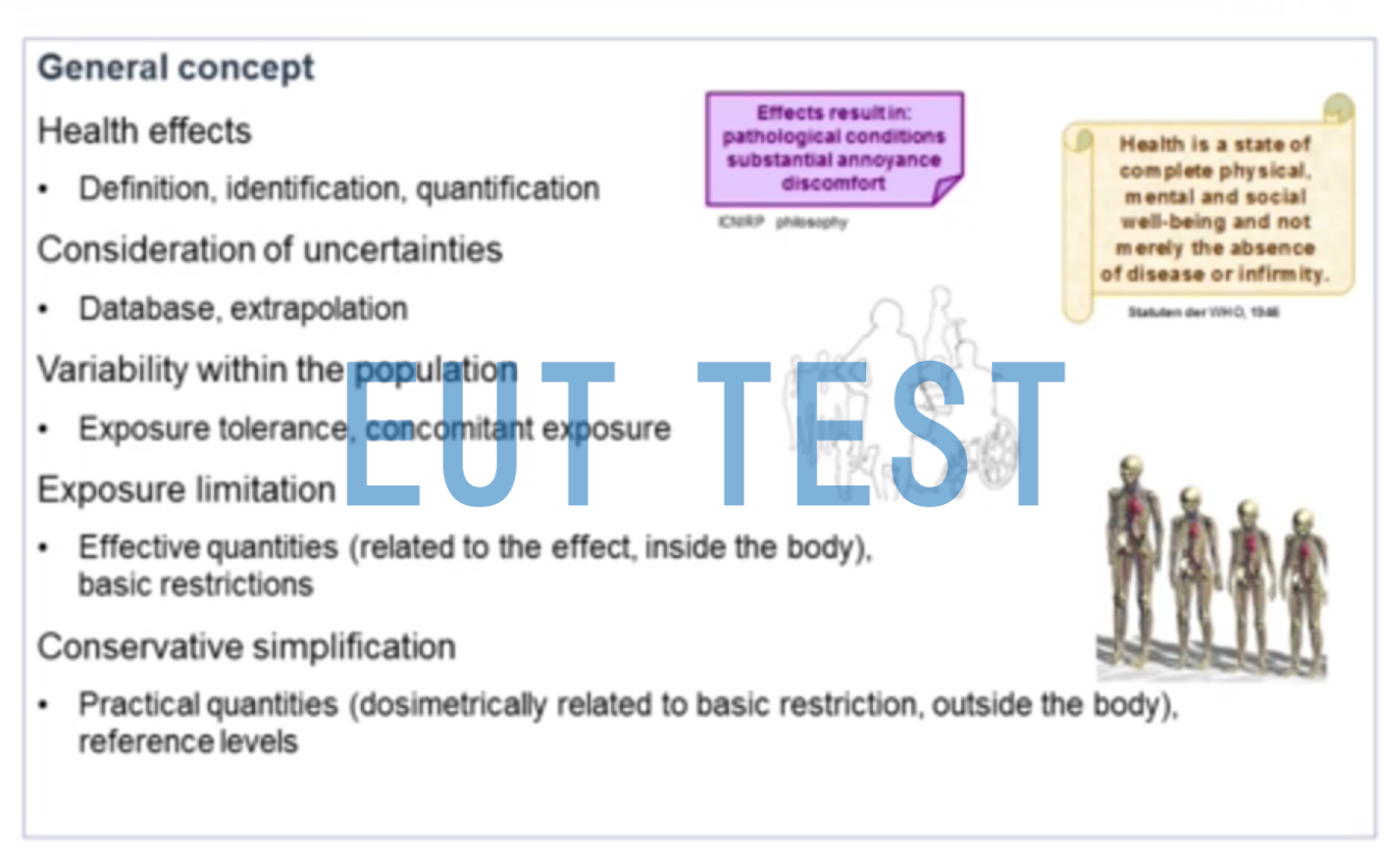Extremely low frequency (ELF) electric and magnetic fields (EMFs) occupy the lower part of the electromagnetic spectrum in the frequency range 0-3000 Hz. ELF EMFs are generated by charged particles. Artificial sources are the main source of ELF EMFs and are usually associated with the generation, distribution and use of electricity at 50 Hz in Australia or 60 Hz in some other countries. Electric fields are generated by voltages, while magnetic fields are generated by electric currents. The properties of ELF electric and magnetic fields are described in detail in the World Health Organization's Environmental Health Criteria 238 Extremely Low Frequency Fields.
Low Frequency LF is different from Extremely Low Frequency ELF
Low Frequency (LF) is an acronym for Low Frequency Time-Varying Electric and Magnetic Fields, which describes a portion of the electromagnetic spectrum that encompasses the frequency range from 1 Hz to 100 kHz. LF fields have two components: the electric field generated by an electric charge and the associated magnetic field. The magnetic field occurs only when an electric current is flowing. The electrical component is measured in volts per meter (V/m). The magnetic component is measured in amperes per meter (A/m) and is expressed in Tesla (T) or, in some countries, in Gauss (G) for magnetic flux density.
Low-frequency fields are primarily associated with the supply of electricity, through the generation, distribution and use of alternating current (AC). The frequencies used for this purpose are usually 50 or 60 Hz, depending on the country/region concerned. In everyday life, people are exposed to low-frequency fields around electrical and electronic equipment, mainly at home and at work. Power lines are also a source of low frequency fields.
How to measure ELF electric and magnetic fields?
ELF EMF measurements are performed to characterize the emissions from the source and the exposure of personnel or experimental subjects. Electric field strength is measured in volts per meter (V/m). Magnetic field strength is measured in amperes per meter (A/m), but is often expressed as magnetic flux density measured in Tesla (T) or microTesla (μT). Another unit commonly used to measure magnetic fields is the gauss (G) or milligauss (mG), where 1 G equals 10-⁴ T (or 1 mG = 0.1 μT).
How is the human body exposed to ELF electric and magnetic fields?
ELF EMFs are produced by both natural and man-made sources. Naturally occurring ELF EMFs are associated with atmospheric processes such as ionospheric currents, thunderstorms, and lightning. Artificial sources are the primary source of ELF EMFs and are usually associated with the generation, distribution, and use of electricity at frequencies of 50 or 60 Hz. Power lines, wires, and common appliances (electric blankets, televisions, hair dryers, computers, etc.) all generate ELF EMFs.
The widespread use of electricity means that people are exposed to ELF electric and magnetic fields in their homes, in the environment, and in the workplace. Residential exposure to ELF fields depends on many factors, including the distance from local power lines, the number and type of appliances used in the home, and the configuration and location of household electrical wiring. Background magnetic fields in the home are typically around 0.1 µT. Background electric fields in the home can be as high as 20 V/m. In the vicinity of some appliances, instantaneous magnetic field values can be as high as several hundred microteslas, and electric fields can reach several hundred volts per meter. At ground level, directly under power lines, the
Workplace exposures may vary. In the power supply industry, workers may be exposed to magnetic fields in excess of 2,000 µT and electric fields of up to 30 kV/m. Office workers are typically exposed to much lower fields when using equipment such as computers and photocopiers. However, there is evidence that workers in some non-electrical occupations may also be exposed to elevated EMFs, for example, workers in the apparel industry have been shown to be exposed to levels in excess of 10 µT.
What are the effects of exposure to ELF electric and magnetic fields?
Acute exposure to high levels of ELF EMF is known to affect neurologic function. However, with the exception of medical exposures in patients and occupational exposures in some professions, exposure to high levels of ELF EMFs is extremely rare. They do not occur in people's daily lives and should not occur at work.
There is no conclusive evidence that ELF EMFs are associated with long-term health effects. Some epidemiological studies have suggested an association between long-term exposure to higher-than-normal ELF magnetic fields (which may be associated with residential proximity to transmission lines or other power supply infrastructure, or through unusual household wiring) and increased incidence of childhood leukemia. However, the epidemiologic evidence is weakened by various methodologic issues, such as potential selection bias and confounding. In addition, the association is not supported by laboratory or animal studies, and no plausible theoretical mechanism has been proposed.
Health impacts associated with ELF fields are further described in the ARPANSA Fact Sheet Power and Health.

Exposure to very low frequency ELF electric and magnetic fields
Control of exposure to very low frequency ELF electric and magnetic fields
The International Commission on Non-Ionizing Radiation Protection (ICNIRP) has issued guidance (PDF 641 kb) on limiting exposure to time-varying electric and magnetic fields (1 Hz -100 kHz) to prevent exposure from causing established health effects to ELF EMFs.The ICNIRP ELF Guidance is consistent with ARPANSA's understanding of the scientific basis for protecting the public (including the fetus) and workers from exposure to ELF EMFs. Consistent with ARPANSA's understanding of the scientific basis for protecting the public (including fetuses) and workers from ELF EMF exposure. Detailed information about ICNIRP and links to the ICNIRP ELF Guidelines can be found in International Best Practices, as well as the use of low-frequency magnetic field loop antennas or electric field antennas to measure and control the effects of field exposure.
Learn more:Methods of frequency range division of the radio spectrum

